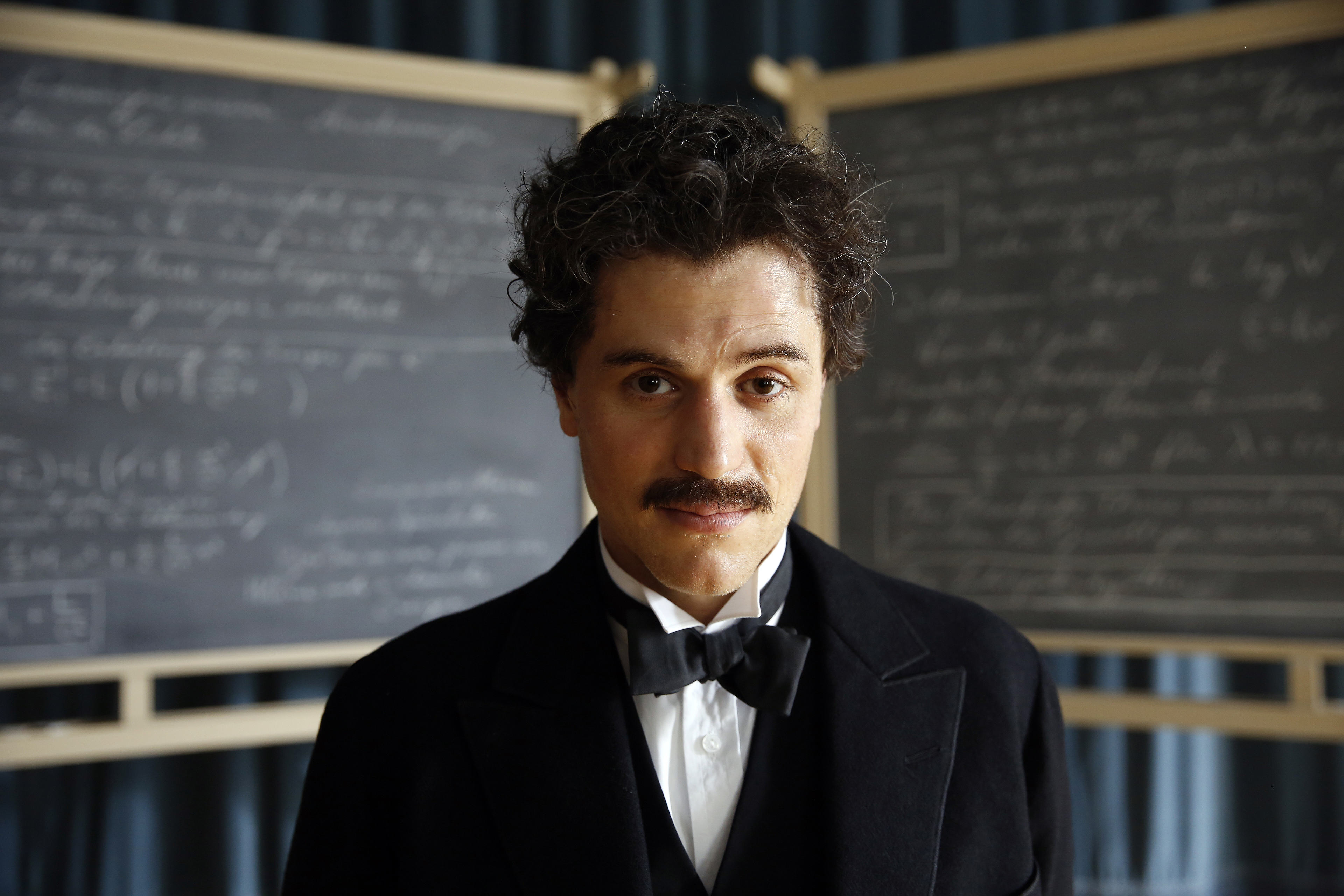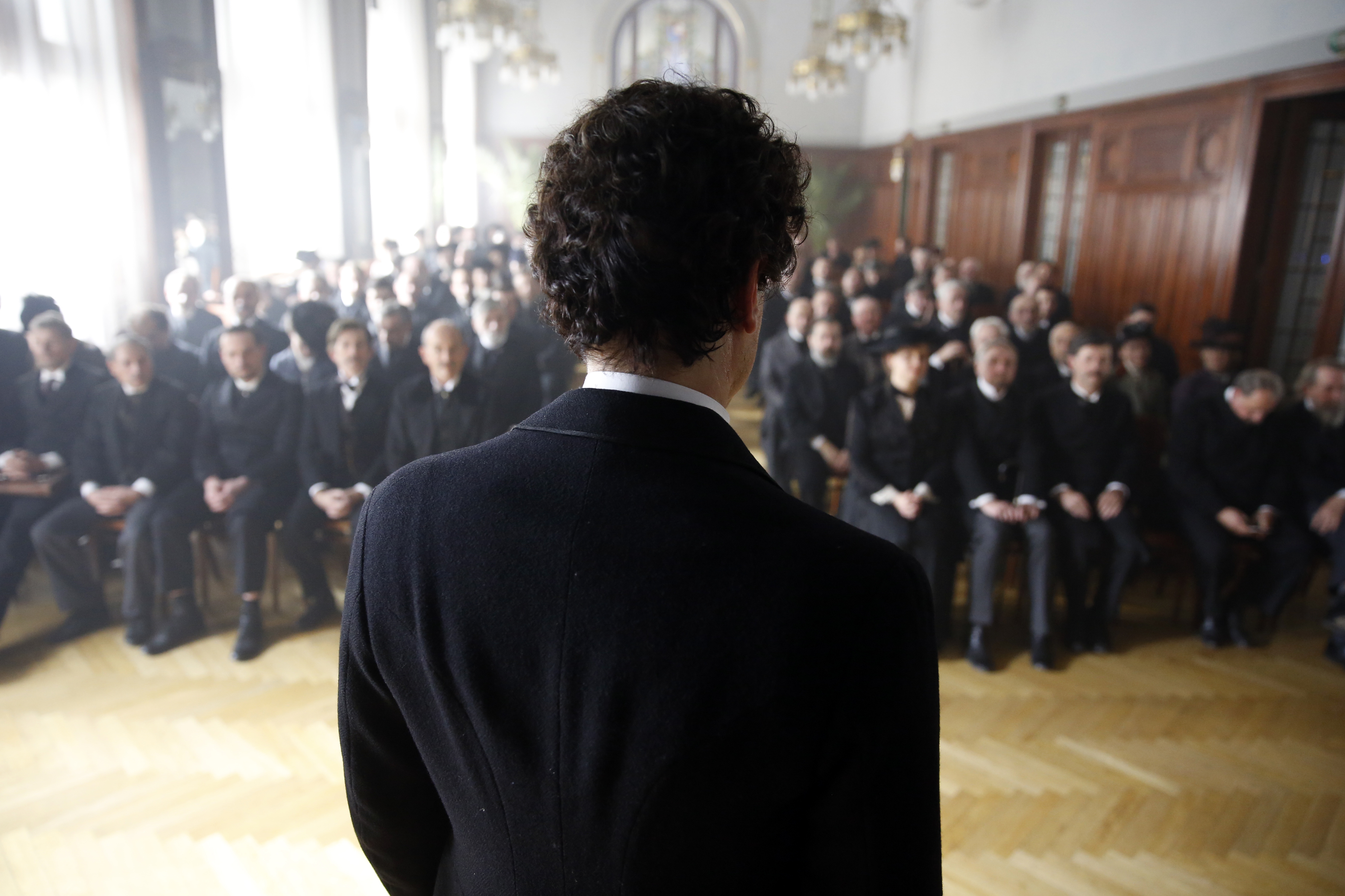In Nat Geo's 'Genius,' Visualize Einstein's Theory of Relativity

After struggling for years to be recognized for his controversial scientific ideas, Albert Einstein finally reaches science celebrity status in Chapter 5 of "Genius," which airs tonight on the National Geographic Channel.
In 1905, when Einstein was about 26 years old, his physics career took off. Not only was Einstein finally getting his papers published, but reputable scientists like Max Planck had begun to build upon his theoretical work. But while the scientific community fawned over his now-famous theory of special relativity, a few things about the theory just didn't sit right with Einstein.
Before Einstein started his first teaching job after earning his degree, Einstein spent two years evaluating patent applications at the Federal Office for Intellectual Property in Switzerland. But he still found time to write several groundbreaking scientific papers on the side. Einstein published his first paper on special relativity in the German physics journal Annalen der Physik in 1905. [Photos: The 'Genius' of Albert Einstein on Nat Geo Channel]
Einstein's theory of special relativity defined a new relationship between space and time, stating that there is no absolute frame of reference in the universe, because position and time are relative. But the theory worked only for things moving at constant velocities, and it didn't account for Isaac Newton's universal law of gravity, which states that the gravitational attraction between two objects equals the inverse of the square of the distance.
Since Einstein couldn't reconcile the two ideas, when he was invited to lecture on special relativity at the 1909 Naturforscher conference in Salzburg, Germany, he instead surprised his audience with a talk on something he deemed more pressing — the nature of light. In that talk, Einstein proposed the idea that light is made up quanta, or photons, and behaves as both a particle and a wave. (He received the Nobel Prize in Physics for this work 12 years later.)

"Genius" guides viewers through Einstein's ideas with visualizations of the thought experiments he often used to come up with the ideas in the first place. In Chapter 5 tonight (May 23), a young Einstein (played by Johnny Flynn) describes one of these experiments to his friend Michele Besso (Seth Gabel).
Simultaneity is relative
Einstein asks Besso to imagine standing on a train that is moving at a constant speed. Suddenly, lightning strikes in two places along the train's embankment at the same time. But what exactly would it mean for the two bolts to strike simultaneously?
Get the Space.com Newsletter
Breaking space news, the latest updates on rocket launches, skywatching events and more!
If Besso were standing on the ground exactly in the middle of the two lightning strikes, they'd appear simultaneous. If he were standing on the moving train, however, he would see the lightning strike in front of the train before the lightning that strikes behind the train.
"We thus arrive at the important result: Events that are simultaneous with reference to the embankment are not simultaneous with respect to the train," Einstein wrote in his 1916 book, "Relativity: The Special and the General Theory." In other words, whether the two lightning bolts are simultaneous depends on the observer's frame of reference. And if simultaneity is relative time, then distance must also be relative, Einstein concluded.
'The happiest thought'
In another thought experiment visualized on tonight's episode of "Genius," Einstein takes a ride on an elevator. First, he imagines it plunging down the elevator shaft. As the elevator is in free-fall (assuming it never crashes into the ground, for the sake of this experiment), the person inside would experience a perception of weightlessness.
As Johnny Flynn's feet detach from the floor, his papers, pencils and everything else inside the elevator begin to float weightlessly at his side. He then compares that feeling to the feeling one might experience floating weightlessly out in deep space, somewhere far away from anything that has mass and a gravitational force on his body.
Then he imagines the elevator is being pulled upward with a constant force causing accelerated motion. A person inside the elevator would feel pressed against the floor in the same way that a person would experience being in an elevator that is at rest inside a gravitational field. This thought experiment led to Einstein's so-called "equivalence principle," which states that the effects of gravity and acceleration are the same.
Einstein famously called this thought experiment "the happiest thought in my life," and it helped him reconcile his theory of special relativity with gravity and acceleration. This paved the way for the theory of general relativity, which he defined through a series of papers published in 1915 – one decade after publishing his first paper on special relativity.
While relativity may seem like a complicated subject, Nat Geo breaks it down in a way that is simple and easier to understand with cool visualizations of what was going on inside Einstein's head at the time. So if you need a crash course in relativity, tune into tonight's episode on the National Geographic Channel, starting at 9 p.m. EDT.
Email Hanneke Weitering at hweitering@space.com or follow her @hannekescience. Follow us @Spacedotcom, Facebook and Google+. Original article on Space.com.
Join our Space Forums to keep talking space on the latest missions, night sky and more! And if you have a news tip, correction or comment, let us know at: community@space.com.

Hanneke Weitering is a multimedia journalist in the Pacific Northwest reporting on the future of aviation at FutureFlight.aero and Aviation International News and was previously the Editor for Spaceflight and Astronomy news here at Space.com. As an editor with over 10 years of experience in science journalism she has previously written for Scholastic Classroom Magazines, MedPage Today and The Joint Institute for Computational Sciences at Oak Ridge National Laboratory. After studying physics at the University of Tennessee in her hometown of Knoxville, she earned her graduate degree in Science, Health and Environmental Reporting (SHERP) from New York University. Hanneke joined the Space.com team in 2016 as a staff writer and producer, covering topics including spaceflight and astronomy. She currently lives in Seattle, home of the Space Needle, with her cat and two snakes. In her spare time, Hanneke enjoys exploring the Rocky Mountains, basking in nature and looking for dark skies to gaze at the cosmos.









